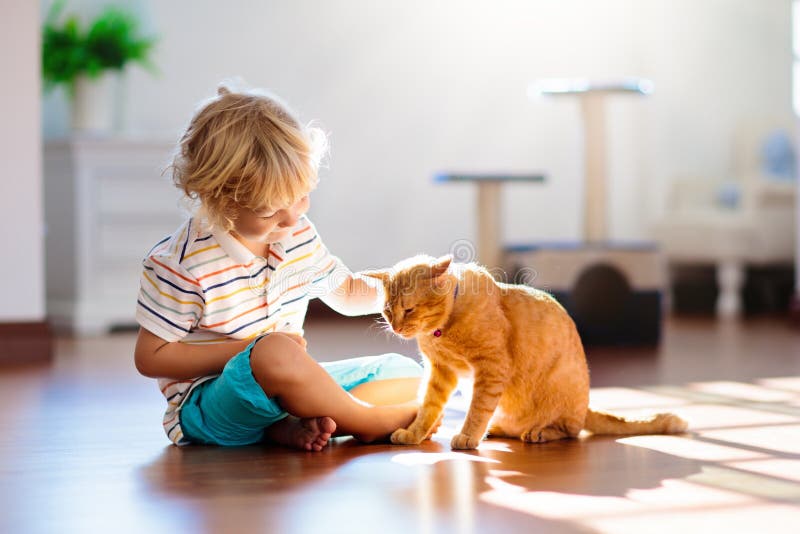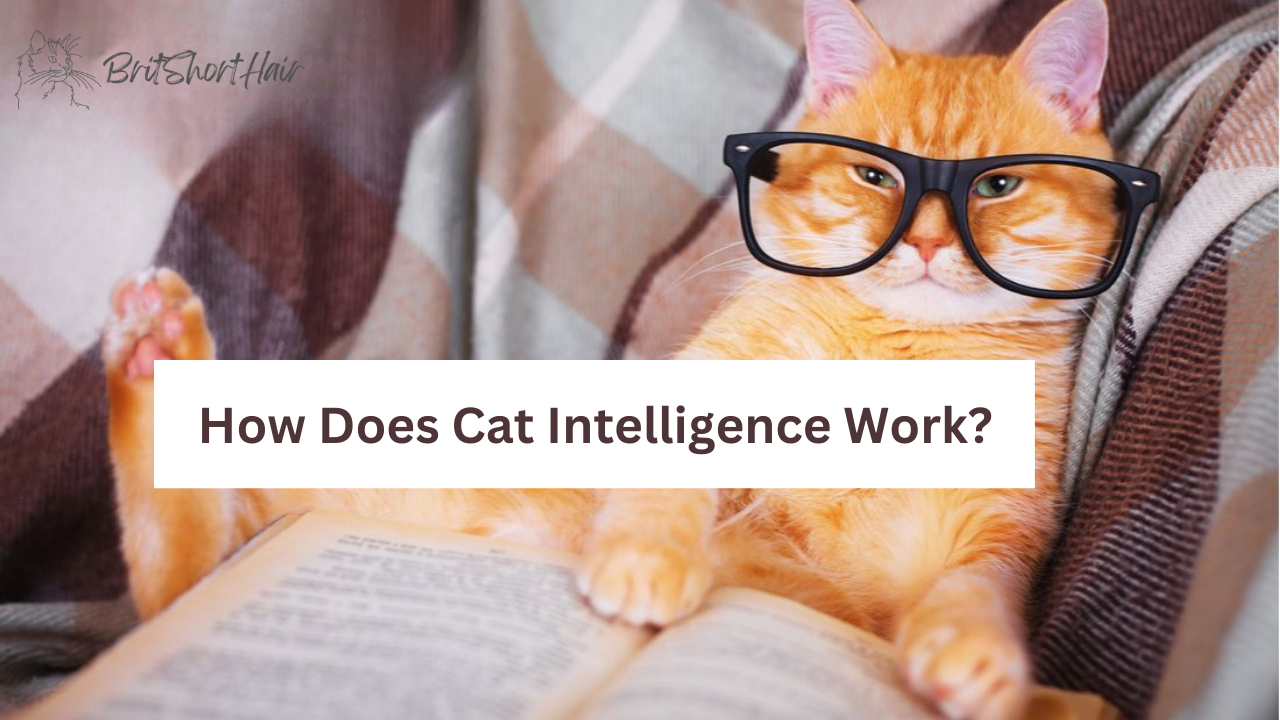Introduction
Behold, as we delve into the perplexing world of cat intelligence, where our feline friends, those majestic creatures who have been domesticated for a myriad of years, stand as one of the most beloved pets on this spinning orb we call home. Known for their aloof and independent nature, yet also hailed for their playful and affectionate behavior towards their human counterparts, cats reign supreme in the hearts of many. But the question that has persisted throughout the ages, the query that continues to spark the imagination of pet owners everywhere, is just how intelligent are our feline companions.
Do they possess the cognitive prowess to match their physical agility and grace? What is Cat intelligence? Fear not, for we shall embark on a journey through the multifaceted dimensions of the feline mind, exploring the vast and intricate tapestry of their intellectual capabilities.

How is Cat Intelligence Created by the Mind?
Enter the enigmatic world of feline intelligence, where the size of the brain is not a reliable indicator of cognitive aptitude. Despite their relatively diminutive brain size compared to other members of the animal kingdom, our feline friends possess a highly evolved and adapted neurological makeup, honed to perfection through the rigors of hunting and survival in the untamed wilderness. Anchored by a prominent cerebral cortex, the feline brain is a marvel of cognitive processing, deftly handling a wide array of intricate and multifarious mental tasks with ease. From problem-solving conundrums to perception and decision-making conundrums, the feline mind navigates these complex quandaries with admirable dexterity and finesse.
Social Smartness
Cats, who are typically praised for their independence and mystique, have a stunning depth of social intelligence that goes much beyond their reputation as lonely creatures. Cats, contrary to popular belief, are not totally self-sufficient beings; they have an extraordinary capacity for building complicated social ties, understanding social cues, and even partaking in hierarchical interactions.
While cats do not display overtly social behaviors like dogs, they are far from socially incompetent. Cats, in fact, have a special propensity to create strong ties with their human counterparts. These ties are based on trust and companionship, demonstrating their great social intelligence.
Cats’ ability to construct social hierarchies within their societies is one component of their social intelligence. This hierarchy is especially visible in multicat families, where cats frequently engage in subtle power conflicts and territorial bargaining. These hierarchies are founded on a deep comprehension of their fellow feline partners’ behavior and communication, rather than physical strength.
Cats are skilled at reading social signs and body language, both within their own species and when dealing with people. They can detect minor differences in speech tone, facial gestures, and even body posture. This ability to read and respond to social cues helps them build ties with both their fellow cats and humans. It enables individuals to negotiate the complexities of social interactions and adjust their behavior as needed.
Capacity to Think
Cats, despite their frequently misunderstood reputation as independent and aloof animals, have a cognitive capacity that extends beyond their outward appearance. This natural ability to analyze, learn, and solve problems is very intriguing.
Learning via trial and error is one-way cats demonstrate their cognitive aptitude. Their exceptional memory supports this process by helping them to recall previous events and acts. For example, if a cat is presented with a locked door blocking its way to an intriguing room, it may attempt a variety of approaches at first. It may scratch or paw at the door, or just meow for attention. The cat learns which activities result in the desired outcome of getting access over time. Their cognitive agility is demonstrated by this iterative learning process.
Cats also have a comprehension of causation, which is a key component of their cognitive arsenal. They can recognize cause-and-effect links in their surroundings. For example, if they poke a toy under a piece of furniture and watch it vanish, they realize the toy is still there, just out of sight. This understanding of causality enables individuals to foresee the repercussions of their actions, which aids in their problem-solving abilities.
Cats can make strategic decisions thanks to their trial-and-error expertise and understanding of causality. Cats may apply this information to human interactions as well as inanimate items. For example, they may realize that lightly scratching furniture catches their owner’s attention. the particular newly acquired knowledge can then be applied in the future, as they recognize that particular behavior produces a certain outcome.
Sensory Capabilities that Aid in Cat Intelligence
- Cats have adapted to survive in the wild. Their sharp senses help them find food, shelter, and partners. This article examines cats’ smart senses.
- Cats can see in dim light and see activity from afar. They can track and catch small animals with their hunting vision. Their acute vision allows them to detect small changes in their environment, such as predator or prey movements.
- Cats can hear sounds humans cannot. Their delicate ears can rotate independently to identify sound sources. Cats can hear prey or predators from afar, making them better at survival in the wild.
- Cats can sniff out pheromones and other chemicals. They can locate prey and other cats with this skill. They can even identify their own urine from other cats to mark their territory and prevent fights.
- Cats can feel pressure and vibration through their skin nerve endings. They can easily travel and detect prey and predators due to their sensitivity. They can also recognize their owners’ touch and bond with them.
Empathic Cat Intelligence
Cats, often perceived as enigmatic and emotionally distant, exhibit a level of emotional intelligence that might be overlooked or underestimated. While their range of emotions includes happiness, fear, anger, and a myriad of subtle nuances, their emotional sensitivity extends to both humans and other animals. The surprising depth of their empathy is a testament to their intricate understanding of the emotional states of those around them.
Cats experience a wide spectrum of emotions, much like humans and other animals. They can display joy when they purr contentedly, fear when confronted with a threatening situation, or even anger when their boundaries are crossed. However, their emotional subtlety is often underestimated. For example, cats can exhibit a range of nuanced behaviors in response to various stimuli, such as curiosity when exploring a new environment, or a sense of playfulness when interacting with toys. This emotional complexity highlights their capacity for depth and breadth in their feelings.
One of the remarkable facets of feline empathy is their sensitivity to the emotional states of humans and other animals. Cats often display an acute awareness of the moods and emotions of their human companions. If a person is sad, upset, or anxious, cats can detect these emotional shifts and may respond with behavior that reflects their understanding. For instance, they may offer companionship by curling up next to their owner, gently purring, or providing comforting nudges.
How do cats function in terms of learning and instruction?

Cats are smart and adaptable. Independent beings prefer observation and exploration to direct instruction. This article examines cats’ learning and instruction. They learn a lot by watching and exploring. A cat may learn to open a cupboard by watching and imitating its owner. Cats also learn from other cats in their habitat. They are curious and often experiment. A cat may try to jump off a high surface and fall, but it will learn from the experience and try again. Our pets need this form of learning to solve problems and adapt.
Cats can learn to use a litter box, come when called, and do tricks. Feline training needs patience, persistence, and feline behavior knowledge. Punishment or negative reinforcement can backfire and cause unwanted behaviors in cats. Positive reinforcement works best. They learn through observation, trial and error, reinforcement, and training. With patience and the appropriate approach, they can learn many abilities and behaviors.
Conclusion
In conclusion, Though less trainable than dogs, felines are smart. These crafty creatures have a multitude of unique abilities and skills that have been perfected over millennia, enabling them to survive in harsh environments and adapt to human life with surprising ease. Their remarkable communication with humans and a broad variety of behaviors and emotional displays demonstrate their enormous intellect and emotional depth. These smart animals deserve our respect and admiration.
hey we have a lot of information on cats you can check out by clicking Bristhorthair.com
wants to follow us on social media

